Sennheiser Momentum Sport review: where superb sound and fitness tech converge
Sennheiser’s workout buds let you immerse yourself in superior audio while monitoring your vital stats on-the-go

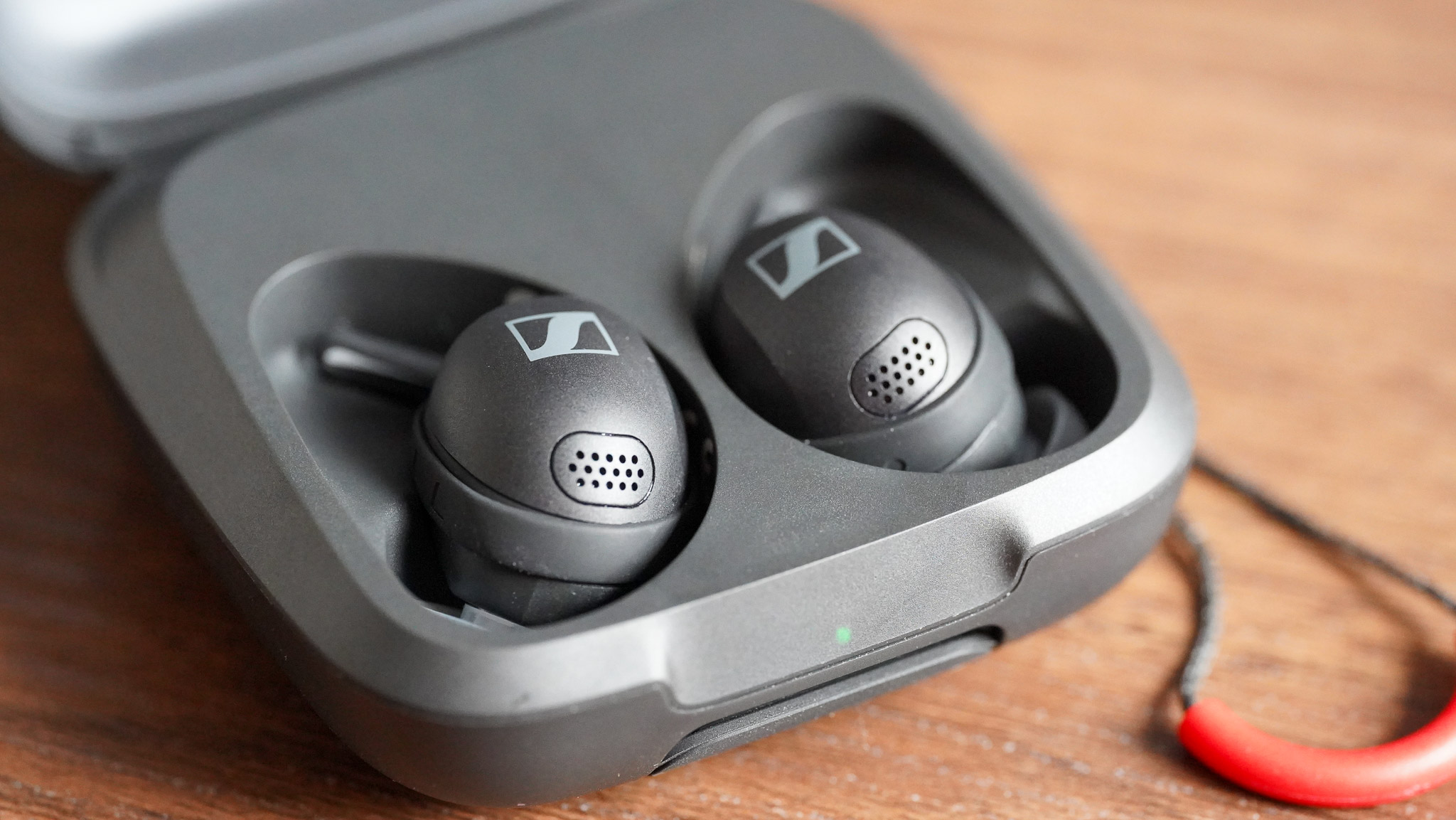
The Sennheiser Momentum Sport, featuring innovative Polar sensors, delivers exceptional sound quality and tracks heart rate and temperature. Its waterproof design and user-friendly app enhance the workout experience, and though it isn't a replacement for wrist wearables, the buds offer unparalleled comfort and functionality, making them a worthwhile investment for fitness enthusiasts.
-
+
Amazing sound quality
-
+
Can track heart rate and temperature in your ear
-
+
Waterproof construction
-
+
User-friendly companion app
-
-
It won’t replace wrist wearables for sports tracking
-
-
Touch functionality isn’t ideal for running
-
-
Temperature data is only used by a select few wearables/apps
Why you can trust T3

Introduced at CES 2024, the Momentum Sport is an intriguing concept from Sennheiser. Built on the 'Powered by Polar' platform, these workout headphones not only deliver impressive sound quality but can also track your heart rate and temperature in your ears, a feature not commonly found in workout headphones.
While it's not the first to monitor vitals in your ears (see also: Amazfit PowerBuds Pro review), its exceptional sound, third-party integrations, and user-friendly app make the Sennheiser Momentum Sport a worthwhile investment if you're willing to meet the price tag.
We already have another model from the brand featured in our best running headphones guide, the Sennheiser Sport True Wireless. However, apart from the signature Sennheiser sound, those buds couldn't be farther from what the Momentum Sport offers.
Want to know more? Read my full Sennheiser Momentum Sport review below.
Sennheiser Momentum Sport review
Price and availability
The Sennheiser Momentum Sport was announced at CES in January 2024 and was launched on 9 April for the public. It’s available now at Sennheiser US and Sennheiser UK for a recommended retail price of $329.95/ £259.99. AU price and availability TBC.
The buds are available in three colours: Polar Black (available in all markets), Burnt Olive (more of a lifestyle colourway) and Metallic Graphite (a sleeker variety). According to the brand, most people will opt for the tested Polar Black colourway.
Specifications

- Type: True wireless stereo (TWS) Bluetooth earphones
- Battery life: 6 hours in the buds + 18 hours in the charging case
- Charging time (0 to 100%): 90 minutes
- Quick charge: yes, 10 min charging with up to 1 hour of music playtime
- ANC: Yes
- Transparency mode: yes
- Weight: 6.4 g (single earbud N ear fin and M ear tip)
- Weather resistance: IP55 (buds), IP54 (charging case)
Design and features
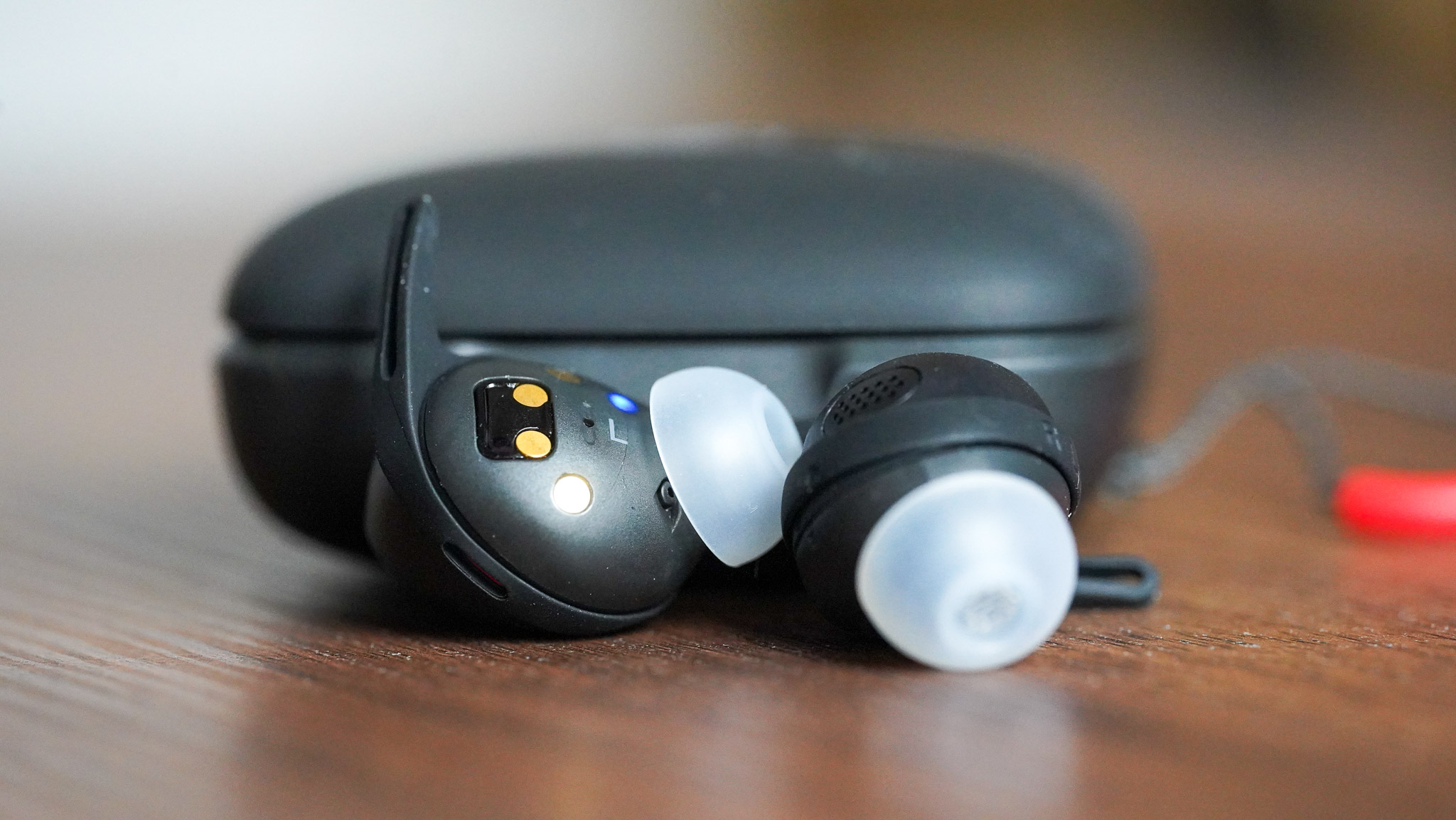
In case you’re unaware, Sennheiser produces some of the best headphones on the market. However, most of the company’s audio products aren’t cut out for workouts. They often aren’t waterproof or secure enough to wear for vigorous exercise. Don’t get me wrong – they are comfortable to wear, but not for running.
Get all the latest news, reviews, deals and buying guides on gorgeous tech, home and active products from the T3 experts
So, Sennheiser's challenge with the Momentum Sport was to improve the ingress protection rating without sacrificing sound and fit. The tricky bit is that a more watertight construction means less air movement in the ear canal, which affects both sound and comfort.
Thankfully, Sennheiser’s parent company, Sonova, is a big player in hearing aids and has the expertise and hardware to help create the buds' shape. Sennheiser isn’t the only brand that relies on hearing aid technology to create better audio products: Jabra has a very similar model.
The Momentum Sport is IP55-rated and has a few tricks up in its sleeve to enhance fit. Firstly, the buds come with a set of wing tips and ear gels, which is handy, as the buds are larger than some of their competitors, especially the Jabra Elite 8 Active.
I don’t think I would’ve been able to use them for running without the wing tips. If you prefer, though, you can use them without these.
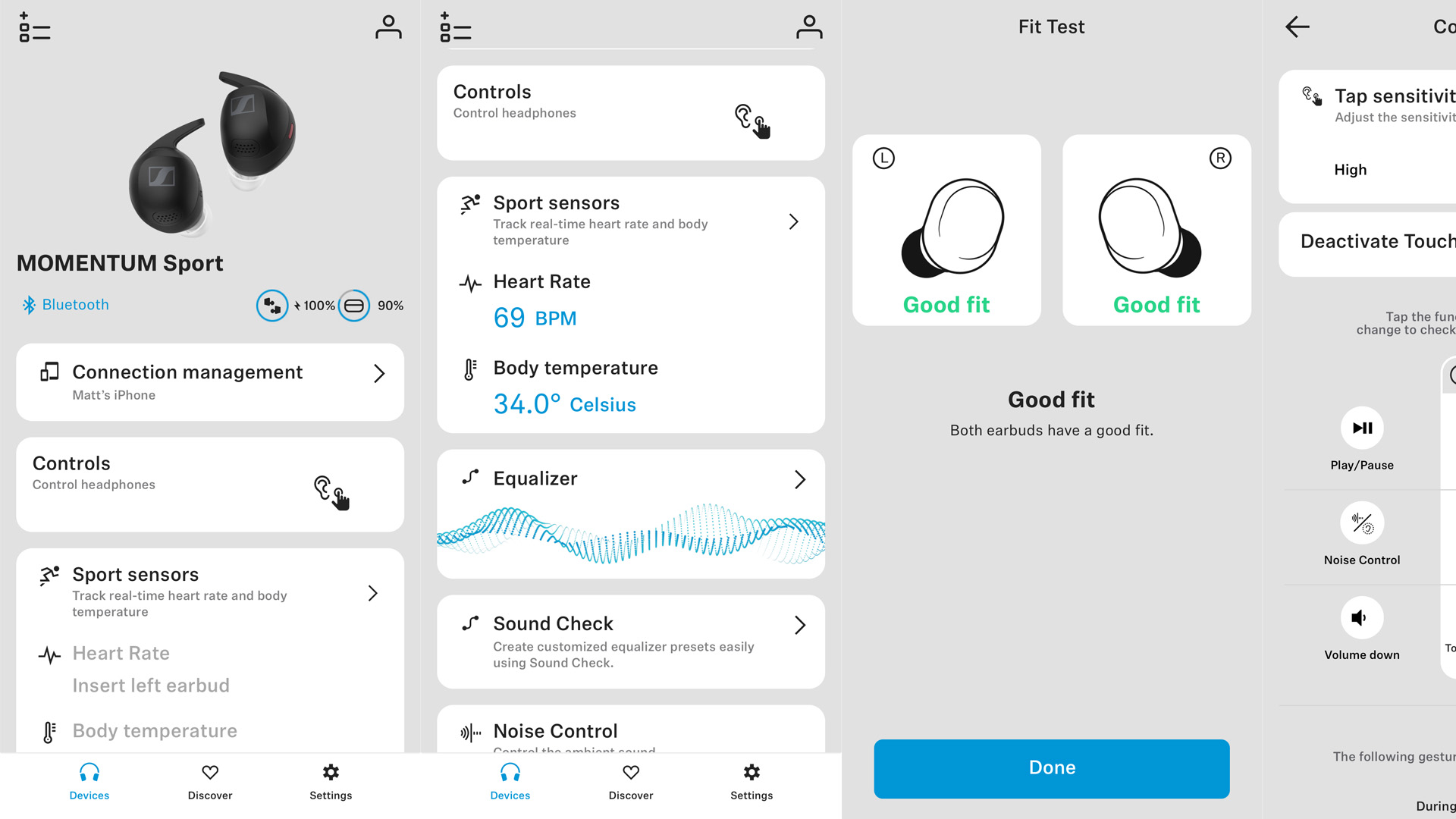
Better still, you can further customise the fit via the surprisingly useful Sennheiser app. I often find headphone companion apps lacklustre, but the Sennheiser app is an exception to the rule. It offers a bunch of features, including a fit finder, personalised sound, and the ability to change the touch control layout and sensitivity.
One thing I haven’t mentioned yet is the charging case. It’s IP54-rated, so nearly as waterproof as the buds themselves. It has an intriguing silicone hinge that’s said to be less prone to breaking. I had reservations about it, as I wondered how resistant the hinge would be against torsional forces over time. The floppy design is an interesting concept, and I look forward to seeing how it performs in the long run.
The big news is, of course, the onboard sensors. The Sennheiser Momentum Sport has two of these: a heart rate sensor and a temperature sensor. Why temperature sensor? Sennheiser says it adds an extra layer of understanding of your workout performance. The company also claims the sensors are more accurate as they sit in the ear where there is less movement than wrist-based sensors, which, in theory, is true.
You can see real-time heart rate and temperature data in the Sennheiser app and use the buds as an external sensor for workouts. Most Bluetooth wearables will recognise the Momentum Sport as an external heart rate monitor, but only a couple can use the temperature feed for now.
Actually, no wearables could use this data, or more precisely, none could use it before the launch date. The only wearables that will be able to utilise it at launch are the Polar Vantage V3 and the new Polar Grit X 2 Pro. That’s because these are the only watches built on the Polar Elixir platform, which is the one Polar offers to other companies to use as part of their ‘Powered by Polar’ service.
Performance and comfort

Fun fact: according to Sennheiser, 87% of people use headphones for sports, and most will turn back home if they forget to take their earbuds. In shorts, most people can’t imagine going for a run without their buds; they are as much part of the experience as running shoes and multisport watches.
I’ve also been told before that people often prioritise comfort over sound performance. Luckily, you don’t have to worry about either, as long as you have medium to large ears, as the Sennheiser Momentum Sport was designed for this group of people.
I fall squarely in this category, so I found the buds comfortable enough to wear and not just for exercise. The wing tips helped a lot in keeping the Momentum Sports in my ears during my runs, although the silicone band that keeps the wing tips in position are thin and tends to rotate around, requiring occasional readjusting.
I prefer physical buttons rather than touch controls on my running headphones, and I was initially struggling with controlling the Momentum Sport. The buds kept changing modes and skipping songs as I tried to put them in my ears until I realised you can turn down the sensitivity in the app. You can turn off touch controls completely, but that would mean you need to use the phone to adjust the volume, etc.
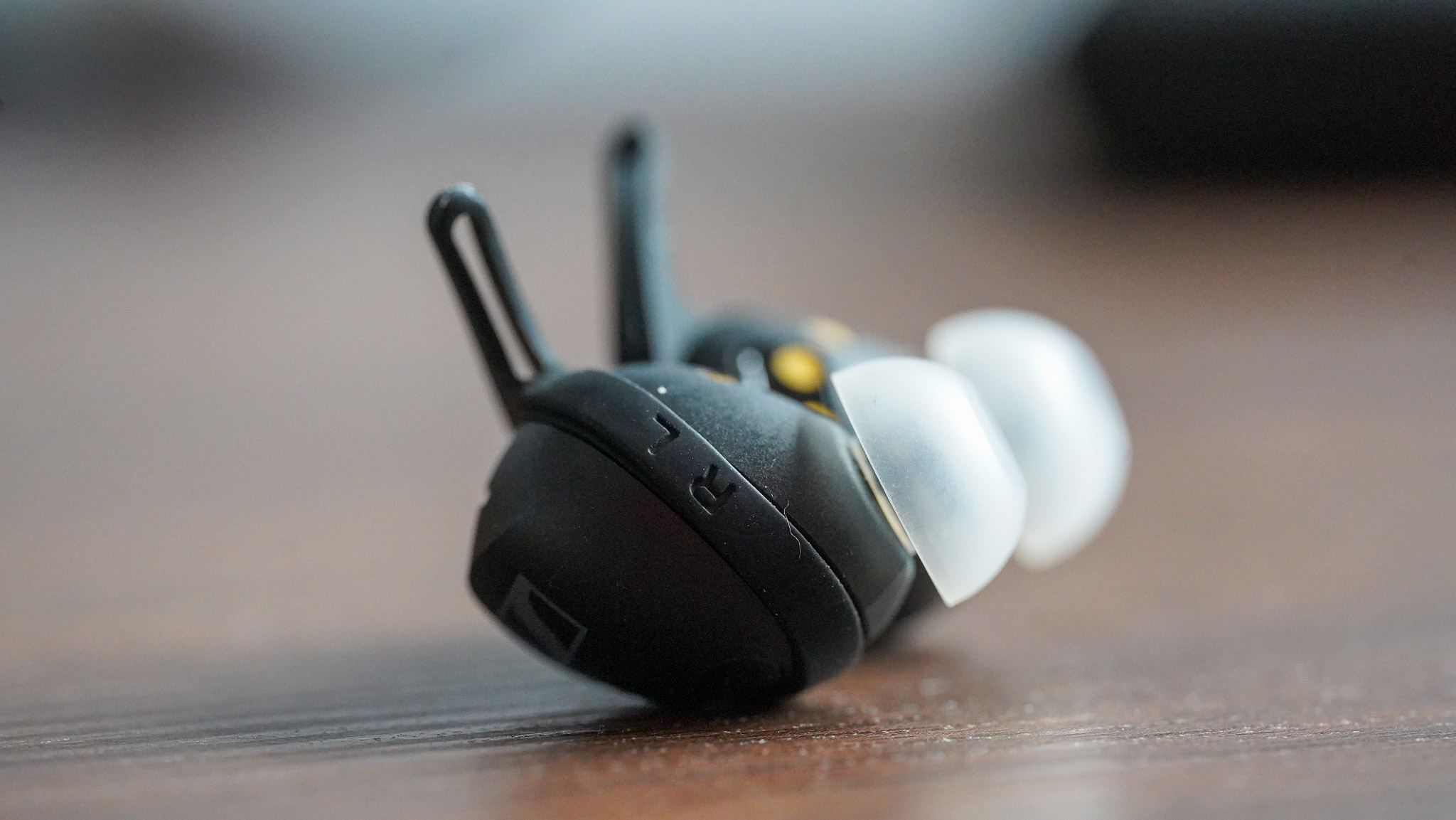
Thanks to the large 10 mm drivers, which are bigger than Sennheiser’s average for such small buds (approx. 7 mm), the sound quality is high-fidelity, with audio playing in all frequency ranges beautifully. There is no Dolby Atmos or Spatial Audio, but even without those, everything played by the Momentum Sports buds feels well-rounded and balanced.
You also get active noise cancellation, transparency mode, and what Sennheiser calls anti-wind mode. Anti-wind mode is a type of transparency mode that filters out wind noise but leaves other ambient sound intact, so to speak. It's great for runners and cyclists.
How about heart rate and temperature tracking? Both are fine, especially the types of runs/exercise people would use the Momentum Sport (i.e. low-intensity stuff). I agree with the brand’s claim that earbuds could provide more consistent readings than wrist wearables, but there can not only be stuff in your ears that affects optical sensors (let’s not discuss those here), but the accuracy of wearables also often depends on algorithms.
The latter is fine—after all, it’s Polar we’re talking about—but due to the compact size of the buds and the fact that there are other parts in there, not just sensors, there is only so much computing power Sennheiser could dedicate to heart rate and temperature tracking. This is just my guess, anyway.
Verdict
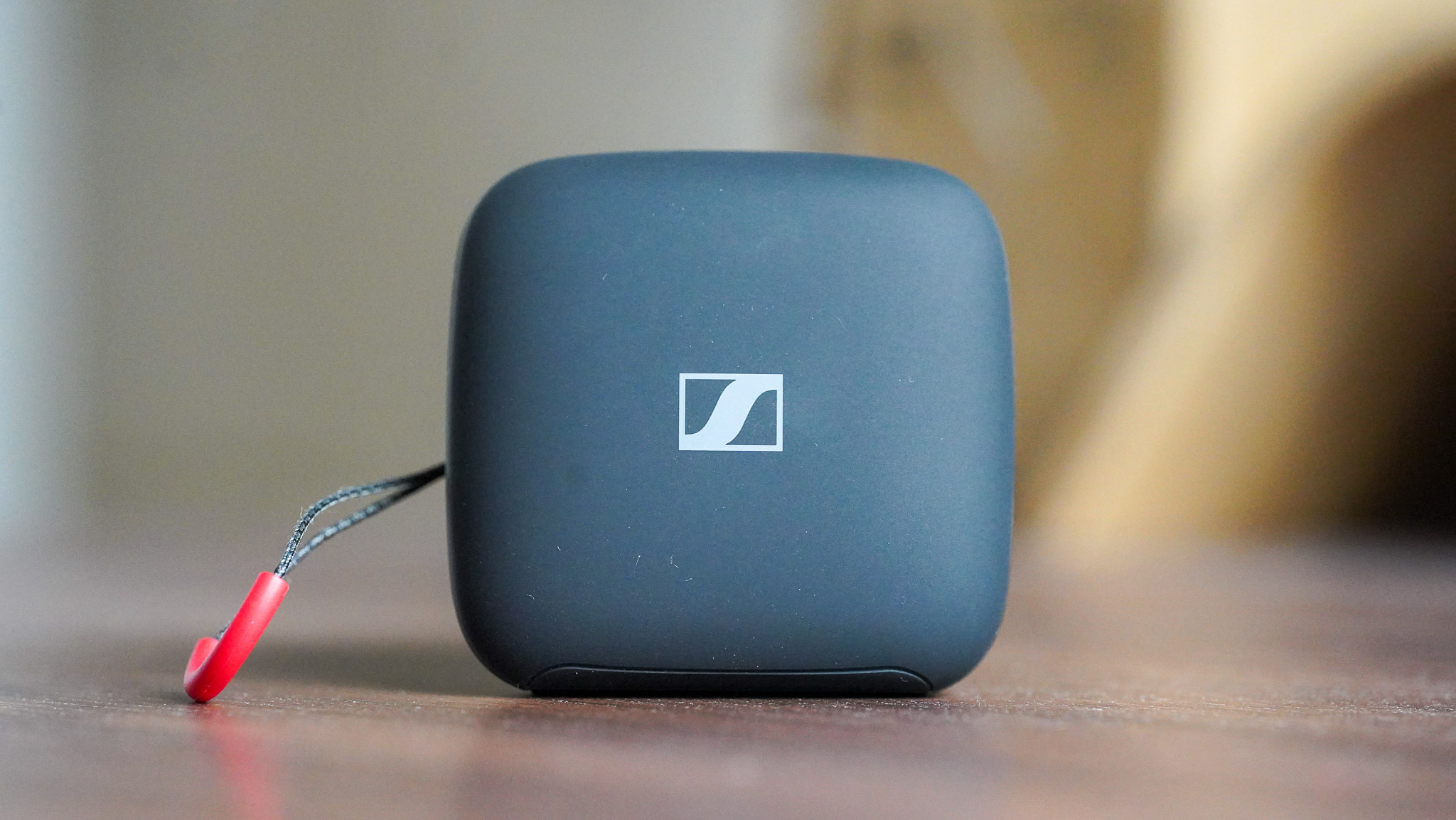
Are the Sennheiser Momentum Sport headphones worth the hefty price tag?
They are comfortable and sound great, that’s for sure. The companion app is superb, too, and admittedly, you get some special features that not many other headphones possess. There are different listening modes, the fit finder and personalised sound, and generally resilient build quality. It’s a well-thought-out package.
This is all fine, but do we actually need heart rate and temperature tracking? Would it not be better to have a workout-optimised Momentum True Wireless 4 without the sensors, priced more competitively? That would still make the Momentum Sport a premium pair of workout earbuds.
That said, it’s hard to be angry with the earbuds, as they do everything they are supposed to do so well. And who knows, once more wearables/apps start supporting the data from the Momentum Sport, using the headphones might make it a viable alternative to external heart rate monitors/temperature sensors.
Also consider
As an open-ear alternative, the Shokz OpenFit headphones prioritise situational awareness for outdoor activities. Despite sound leakage and reduced bass impact, they provide engaging sound quality and customisable EQ options. Ideal for runners and cyclists, they excel in safety-conscious environments but may not suit audiophiles seeking total immersion. Read my full Shokz OpenFit review.

Matt Kollat is a journalist and content creator who works for T3.com and its magazine counterpart as an Active Editor. His areas of expertise include wearables, drones, fitness equipment, nutrition and outdoor gear. He joined T3 in 2019. His byline appears in several publications, including Techradar and Fit&Well, and more. Matt also collaborated with other content creators (e.g. Garage Gym Reviews) and judged many awards, such as the European Specialist Sports Nutrition Alliance's ESSNawards. When he isn't working out, running or cycling, you'll find him roaming the countryside and trying out new podcasting and content creation equipment.